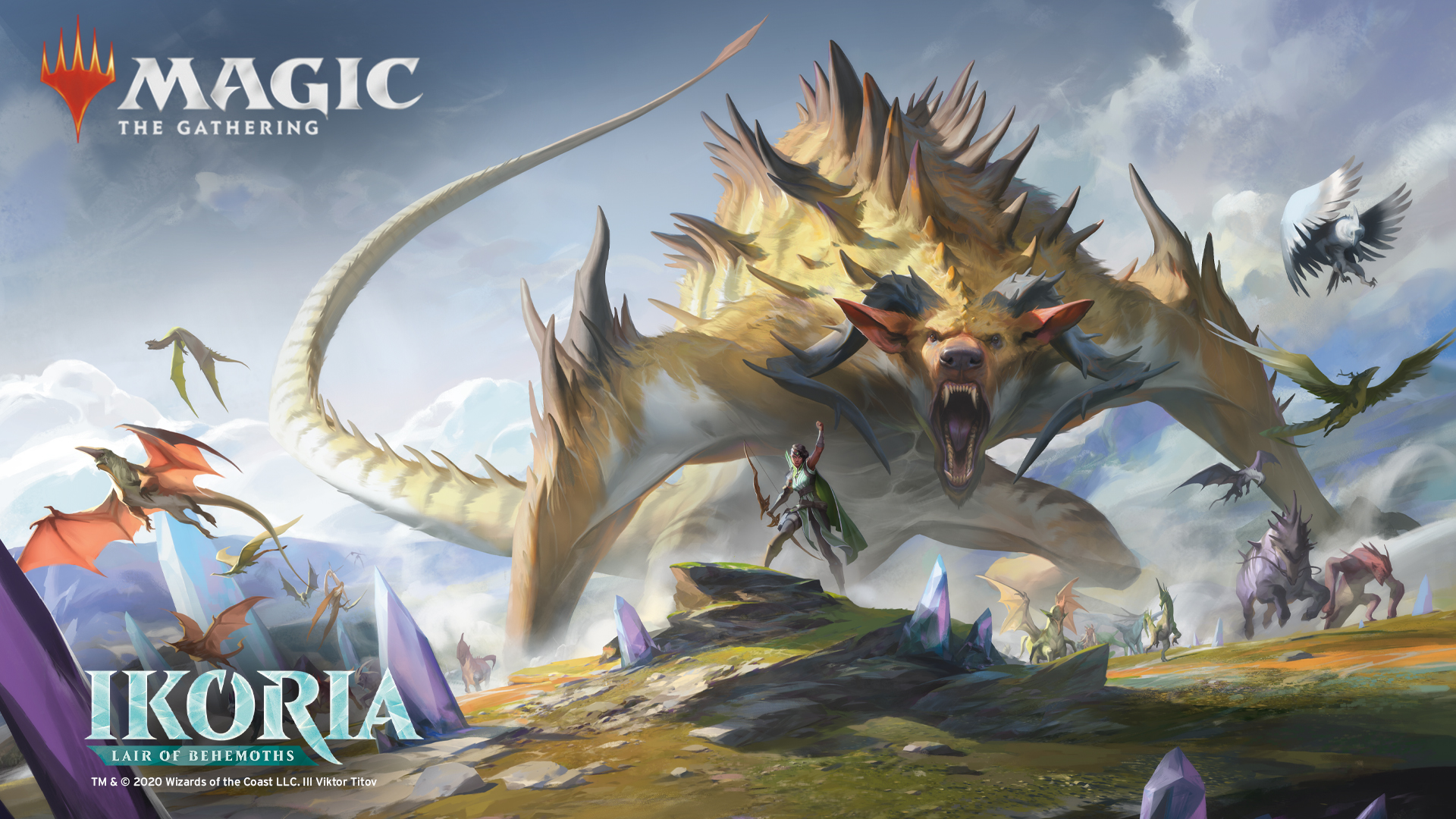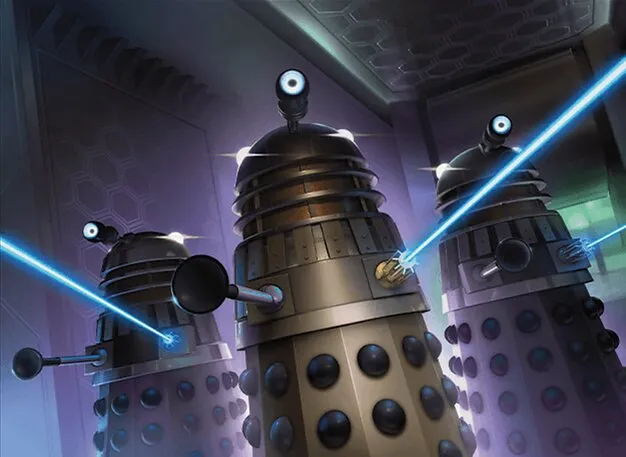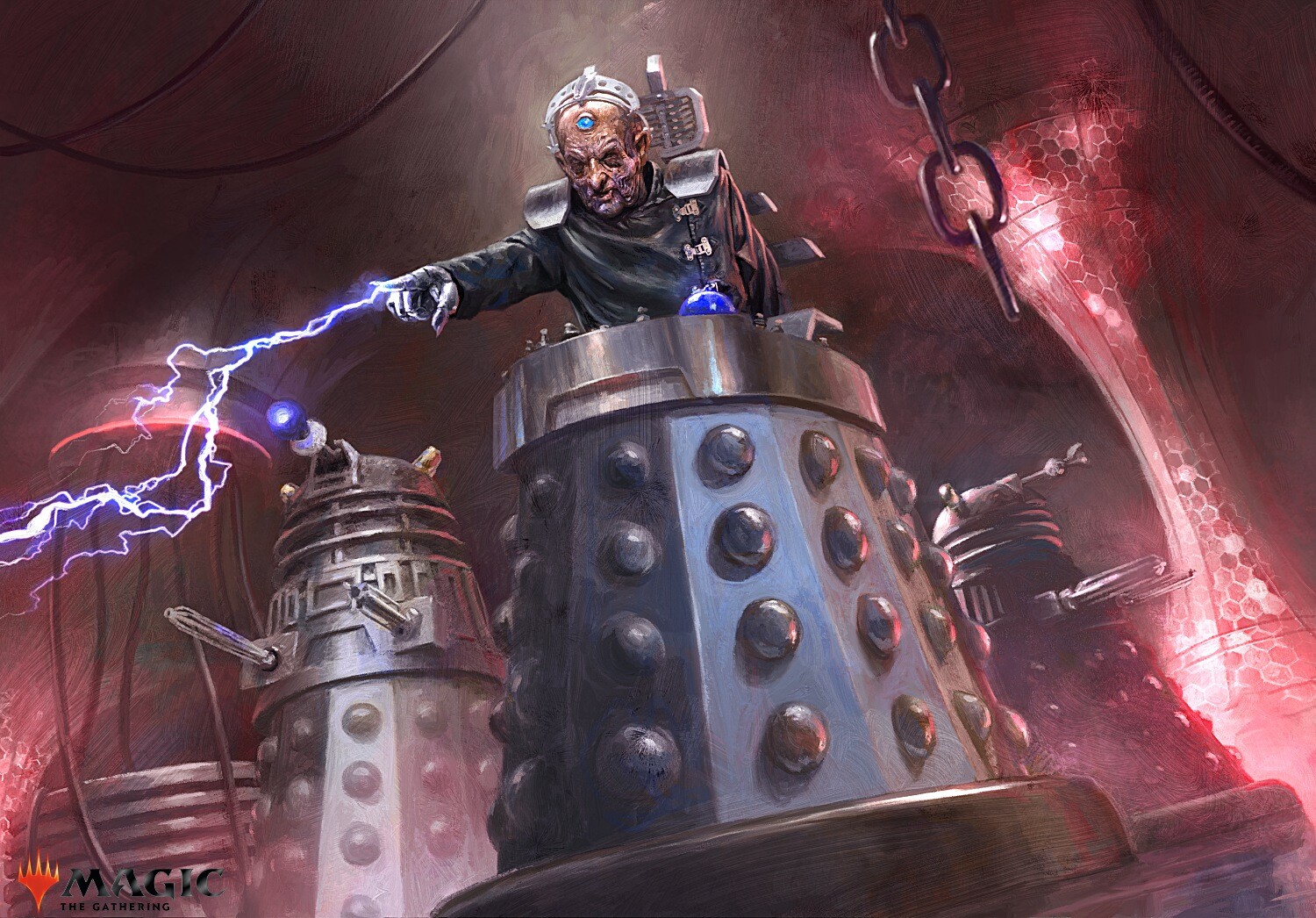Hello traveler! Ah, I see you’re going to Ikoria – the Lair of Behemoths. Yes, if I recall it’s a wild plane and full of monsters, both man and beast – all of them sure to be out for your blood. Best not let your guard down! Being a Mythical planeswalker, I have ventured there and survived its dangers time and time again. As a result, I have some advice that might just help you keep your head when exploring the depths of Ikoria Draft. So, please, listen carefully…
Find Yourself An Ikorian Companion
It’s dangerous to go alone! Companions are creatures that allow you to play them from your sideboard as long as your starting deck meets the card’s companion requirements. You should take all of them highly. First of all, they are powerful rares with hybrid mana costs. This increases their chance of remaining a relevant first pick. As long as your deck is able to play either of the hybrid colors, you can play it normally. In addition, if your 40-card deck meets their requirements, you can make them your companion. More often than not, it is worth doing this while drafting as long as you maintain an average power level. In Limited, resources are often traded fairly evenly between players and end before either player has seen most of their library. Starting a game with an extra card will end up winning you many duels on Ikoria.
The Best Defense Is A Good Offense
Ikoria: Lair of Behemoths is not a set that supports blocking. Firstly, there’s a lot of instant speed interaction that can make combat turn out bad for you. Secondly, the value of your own creatures is high. This is especially true for decks that are built around mutating, a set mechanic that demands you have a non-human creature on the battlefield. Finally, there’s an abundance of creature removal, able to take out the biggest bombs and threats of this format.
When you are faced with a choice to block, it’s important to step back and consider if you can afford to accept this damage in exchange for one of their own blockers becoming tapped to attack. You must think about your ability to win a race, given what’s in your hand and your potential draws. After all, in an Ikoria draft, there are many cards that can help you deal damage more quickly than, and ultimately defeat, your opponent.
The first prominent type of card in this set is an efficient removal spell. Blood Curdle, Ram Through, Pacifism, and Fire Prophecy are just a few examples all found at common rarity. Using efficient removal means you spent less to deal with a threat than your opponent spent to cast it, also known as mana advantage. With enough mana advantage, you are able to develop and attack with a few creatures while simultaneously removing their relevant threats. Be aware of the strength of removal in this set and use it judiciously!
The second category I want to note is cards that have the potential to deal huge damage on the turn that you play them. There are many examples in Ikoria: Lair of Behemoths. Zenith Flare, for decks that are heavily invested in cycling. Similarly, unblocked Prickly Marmosets and several Drannith Stingers also use cycling to deal so much damage that games will suddenly end in your victory. In other decks, mutating creatures effectively grant themselves haste when merging with a non-human that you already own on the battlefield. You can easily swing a race in your favor by adding significant power (Archipelagore) or evasion (Vulpikeet/Cavern Whisperer) to an important attacker. Even the humble Lava Serpent works in a pinch to deal an unexpected 5 damage.
In this set, you should highly scrutinize every block you make, even ones that seem favorable to you. It doesn’t matter if your creature seems much larger or if you might have an instant-speed interaction spell. Ultimately, not blocking means that you avoid risking your board state and you preserve your ability to swing back on future turns. Then, with the aid of the aforementioned spells, you can deal the final points of damage for an exciting victory!
Reducing, Reusing, Recycling in Ikoria Draft
You should take 1 mana cycling (1MC) cards more highly. Particularly if you’re in pack 1 of the draft and there are no above-average playables. These are likely to end up being good picks for several reasons. First, if you end up in the cycling deck, you will definitely play the card. Second, this signals to others that the cycling deck is closed off to them which will help you move into the archetype. Lastly, even if you’re not cycling or of it’s a cycling card you can’t play, they can be used as a colorless cantrip to effectively reduce your deck size. Instead of playing an average 23rd card and a 17th land, you can simply stick two 1MCs in your deck. This increases your chances of drawing powerful cards you want to play.
Keep in mind, however, you’ll need to reduce your land count proportional to the amount of 1MCs you play. Otherwise, you risk drawing too many lands and flooding. Personally, I tend to treat them as non-cards. So, for a deck with five 1MCs, I would build a mana base for a 35 card deck. Meanwhile, others use ratios such as one land removed per every three 1MCs.
No matter what, pay attention to how the deck feels while playing. There’s no exact science to the proper amount of lands when cheap cycling is available. Many factors are involved: cards that cycle for higher costs, the number and quality of your cycling payoffs, whether you’re playing Best-of-One on Arena which uses a hand smoother to improve starting hand quality, etc. All these affect the number of lands a cycling deck might require. The most important thing one can do is stay observant!
Think Flexibly And Reevaluate Constantly
An Ikoria draft is not a place for inflexible pick orders. It’s more important to build a deck that synergizes with itself than to end a draft with a mixed bag of “strong” cards. Even some removal is hard to play in certain styles of decks. For example, Rumbling Rockslide has a lower value in streamlined cycling decks. Such decks often posses a low land count both in the library and on the battlefield. In fact, such decks usually look to defeat their opponent before Rumbling Rockslide becomes respectable removal. In those same decks, you will likely want to play Cathartic Reunion to avoid flood. Meanwhile, hardly any other archetype would want such a card. It is one of many cards in this set that may look bad but are useful – somewhere.
You must be able to recognize when a card goes from barely playable to above-average in your deck. Otherwise, you will struggle in this set. A pick order cannot tell you when such moments occur, so you’ll have to determine them for yourself.
Thanks for listening to my words, friends, and may fortune favor you on Ikorian battlefields. Check back here next Wednesday, May 6, for my next article breaking down Ikoria’s many archetypes and themes. It will be a great guideline for understanding the synergies of the set and thinking flexibly about your card evaluations. If you’d like to join me and a great community of players in our explorations of the Ikoria draft format, enter our Discord server at https://discord.gg/5nRhMGV. During this time of quarantine, Three Kings Loot still fires draft tournaments, using MTG Arena and 3rd party sites. Come play with us Monday, Friday, and Saturday at 19h30 Eastern Time!
-Evan, Chewer of Thoughts





